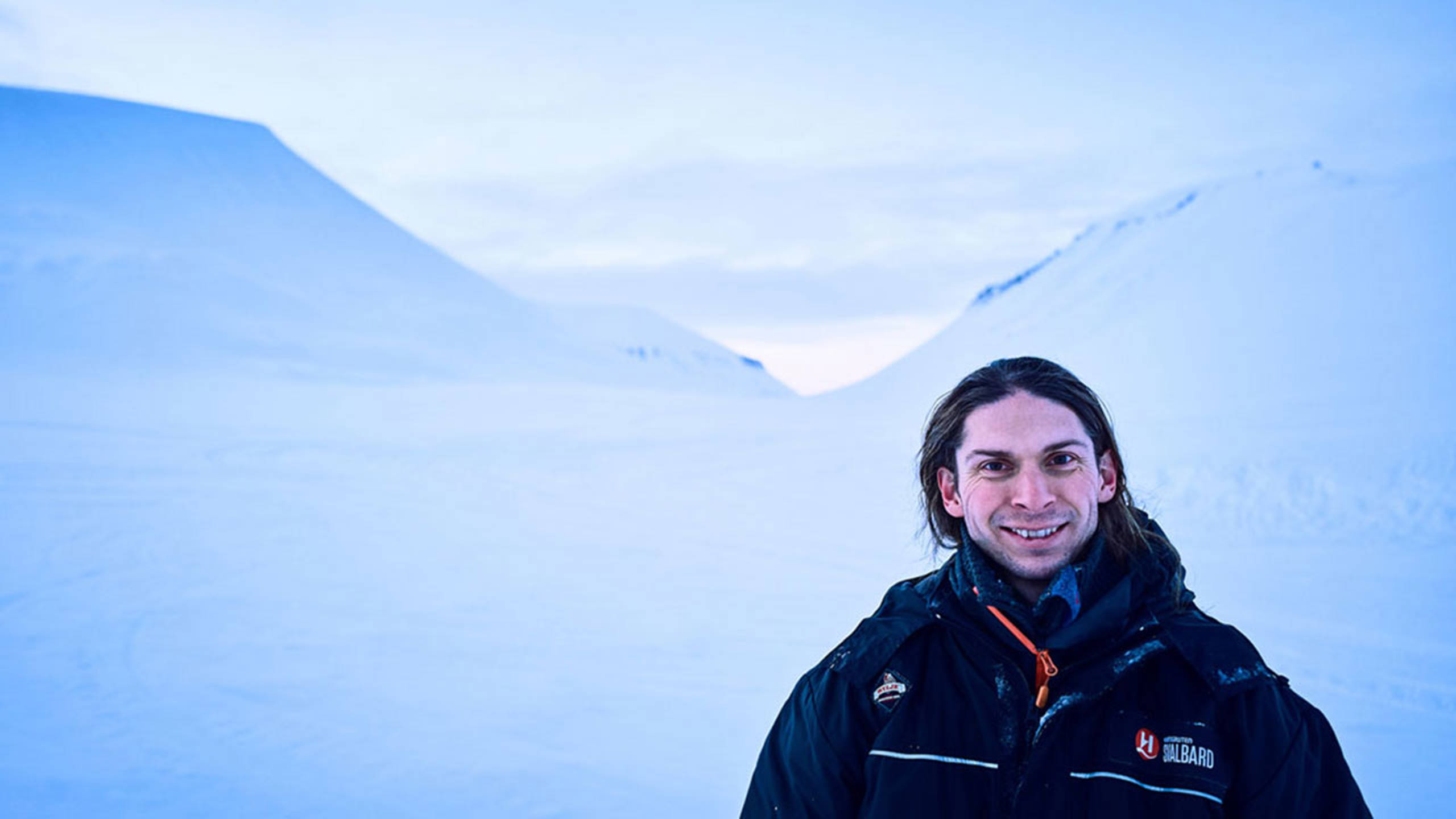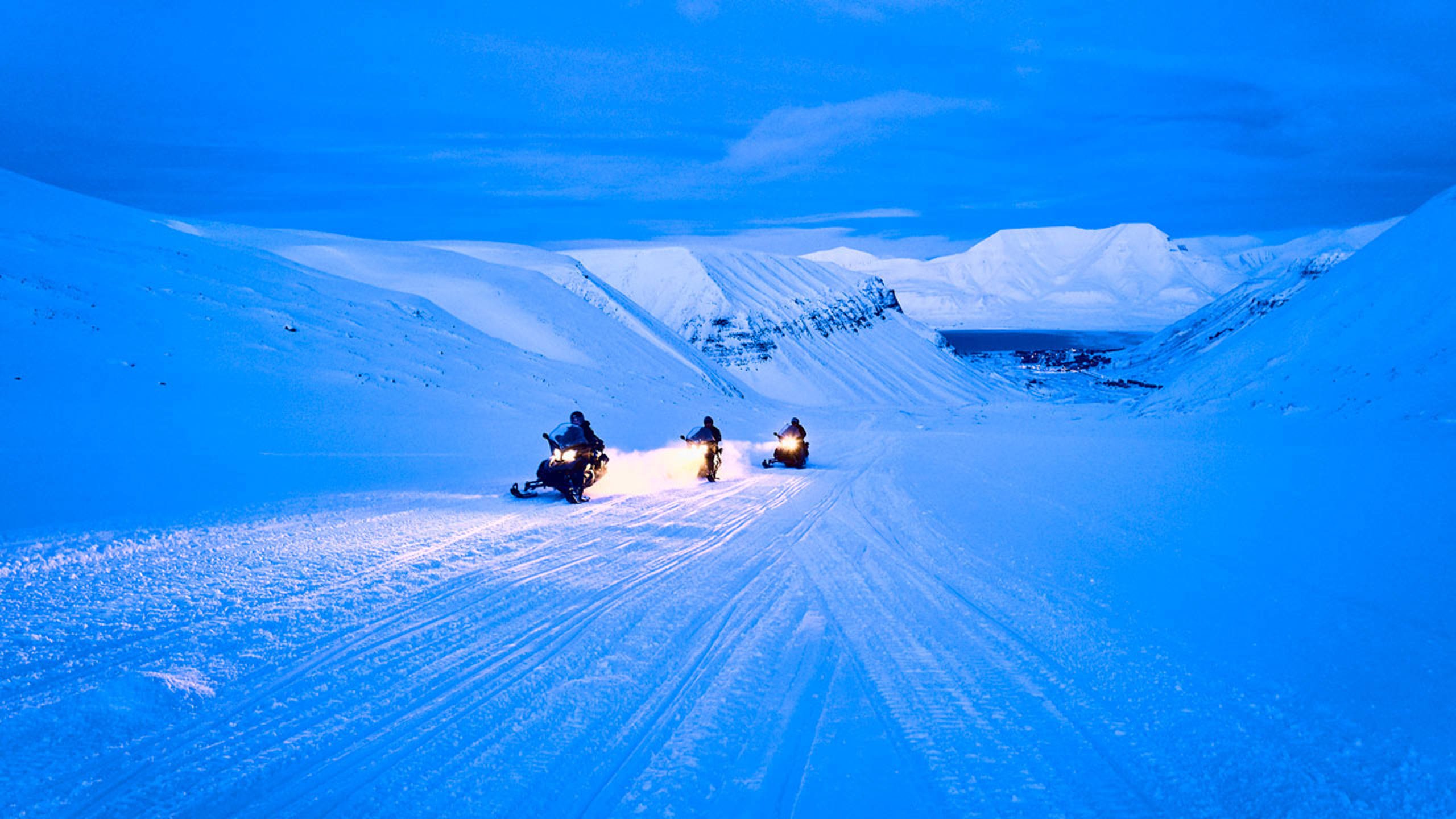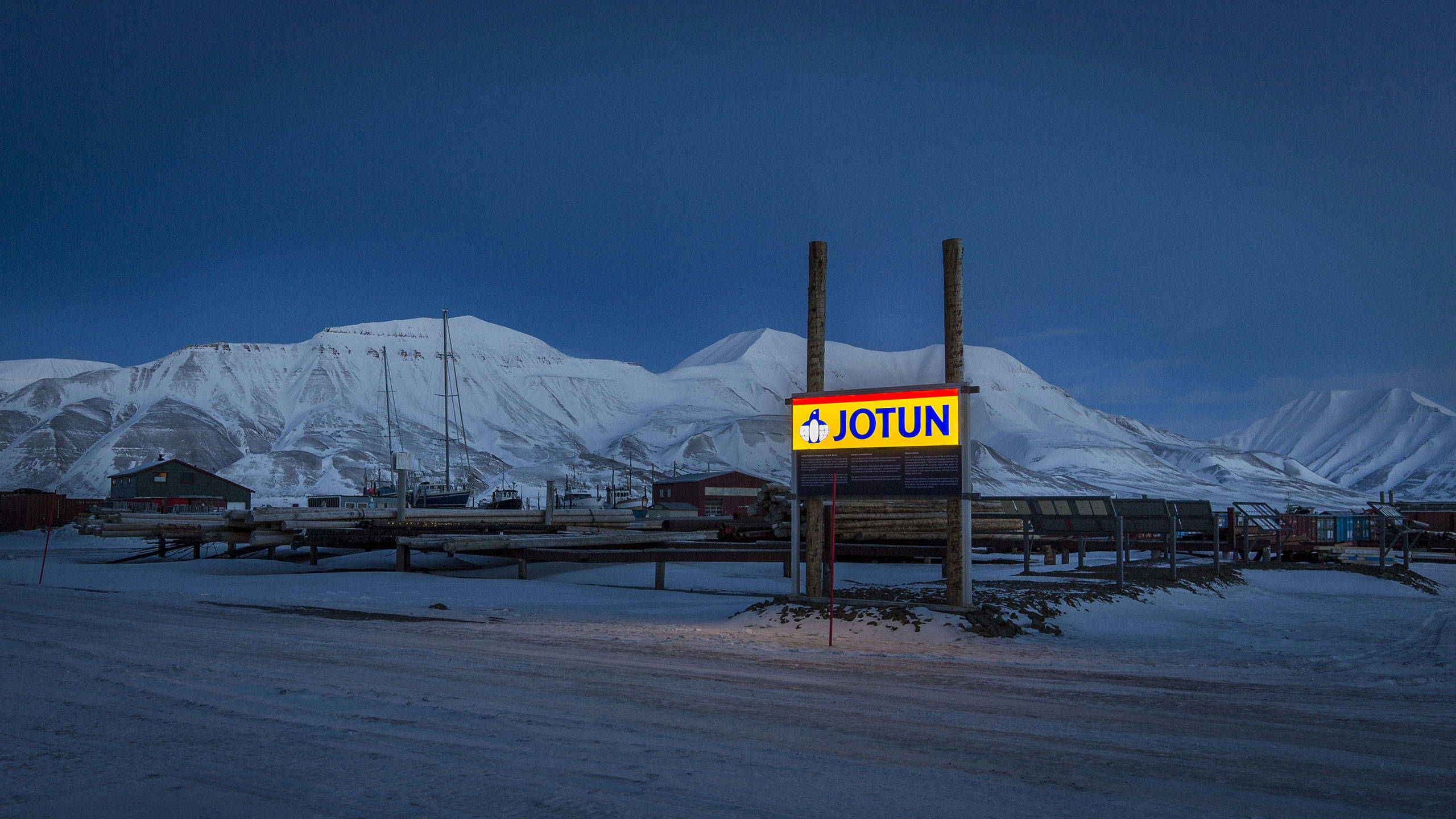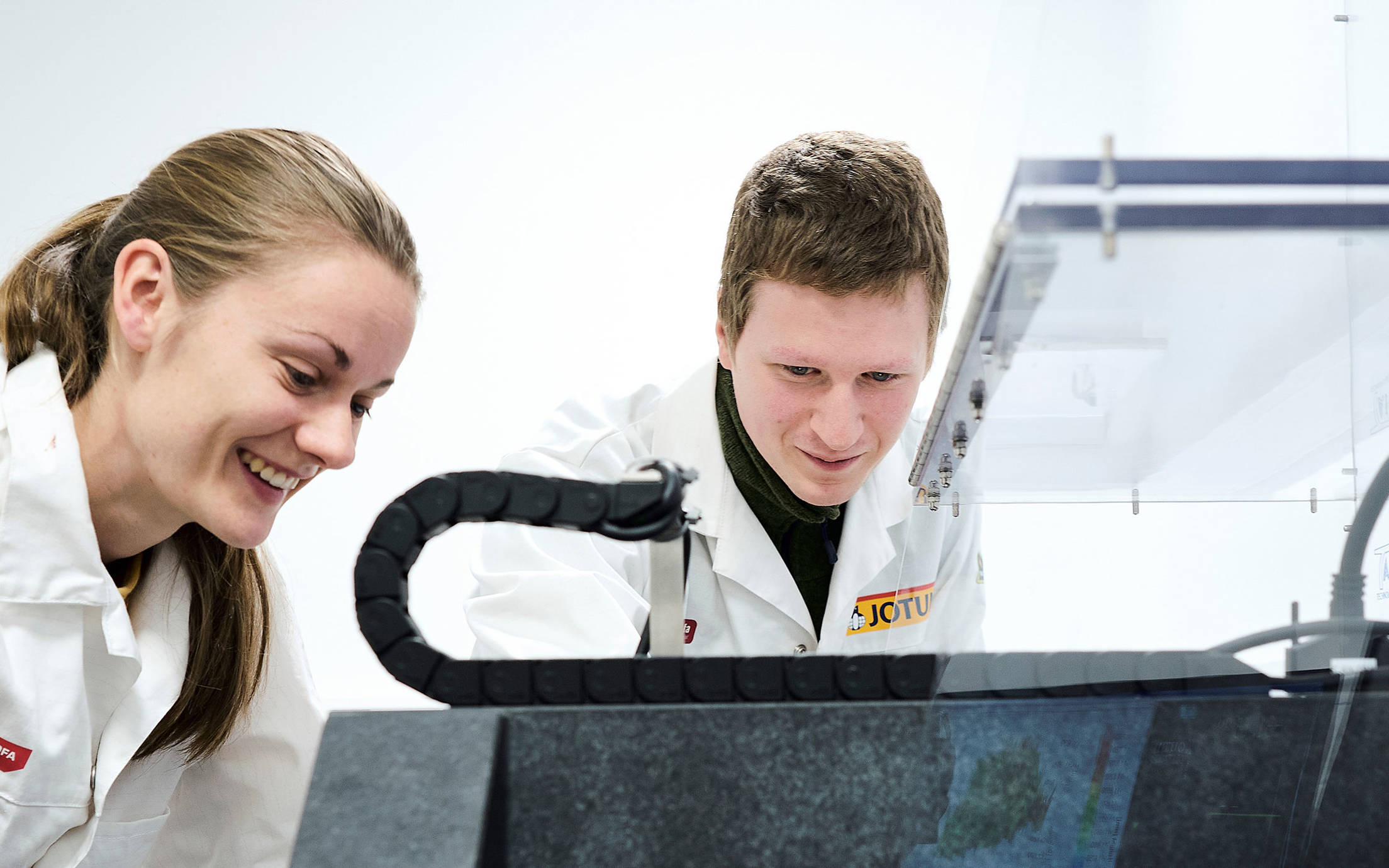
Getting out of your comfort zone
As colour and paint have a major impact on our surroundings, investing in getting to know the science behind it can enable us to make better choices. Because in the 21st century, we never stop learning.

September 21, 2021
A man covered in puffy polar-expedition gear walks across the metre-thick ice covering the Van Mijenfjorden, a 90-minute snowmobile ride south of Svalbard’s Longyearbyen.
Cold twilight covers the frozen landscape. It’s mid-winter and the sun has been hidden below the horizon for months. The man is a scientist, here to inspect paint samples made for ice-breaker ships — one of several long-term tests being run at Svalbard. As the fjord freezes over every winter, coarse ice pushes up and down with the tide, scraping against the paint.
“As academic literature has little reference to the arctic climate, all the testing we conduct here will provide us with increased knowledge and better products,” explains the down coat-clad scientist.
As Senior Chemist in Jotun, Anders W. B. Skilbred is responsible for the Svalbard operation.
“So far, our findings confirm what we have believed and hoped, namely that our products perform well in this climate,” he says.

Jotun has several field test stations around the world where they test and document performance under real-life conditions. The locations of these sites have been carefully selected.
From highly corrosive marine conditions at the Norwegian coastline, via the hot and humid conditions in Singapore, to the various ships sailing around the world, painted with test patches of anti-fouling coatings.
“In this way, we manage to expose our products to a wide range of challenging environments,” Skilbred explains, and continues:
“Typically, every location has a combination of climatic conditions. Such as our test site in Antarctica, where you’ll find extreme cold, wind and UV radiation.”
The Troll Station is located only 2000 km from the South Pole, providing unmatched weather-testing conditions.
In the last few decades there has been an increase in activity in the Arctic. Additional climate change will enable further increases in activity as areas previously covered with sea ice are now open throughout the whole year.
Infrastructure, ships, onshore industry and offshore installations that are either permanently located or moving through the Arctic will have to be protected.
And that is where Jotun comes in. Jotun protects property regardless of the location.
“However, for us to ensure that we can offer coating solutions that will perform under arctic conditions, we need to know and understand these conditions and how they influence the performance of our coating solutions. In short, we need to test," Skilbred explains.

In addition, Jotun uses accelerated testing to measure and document the performance of their paints and coatings. This in-laboratory process also makes sure the products measure up against industrial standards, regulatory requirements and customer demands.
Laboratory testing gives a lot of data in a short time. However, it cannot compete with testing under real-life conditions. The field sites facilitate testing that would be impossible to reconstruct in a lab. Therefore, Jotun performs both.
“Whether it’s taking place in the lab in Sandefjord or at our site in Svalbard, our testing processes are all about providing increased understanding of the conditions that ships, buildings and other constructions face, how these conditions affect them and not least how our coatings perform,” Skilbred says.

Along the way, Jotun’s scientists gain new and vital knowledge about the most important topic of all.
“Tests in the field provide our people with insight about how the ongoing climate change is influencing some of the most vulnerable areas in the world,” Skilbred says.
For instance, historically Svalbard has been categorised as an Arctic desert. However, after more than 120 months in a row with temperatures above normal as well as increased precipitation, the conditions are more similar to a Northern Atlantic environment.
This brings huge challenges to the arctic community, but also completely changes the requirements for protecting buildings, infrastructure and other assets against the new reality.

As colour and paint have a major impact on our surroundings, investing in getting to know the science behind it can enable us to make better choices. Because in the 21st century, we never stop learning.

Hiring people from all over the world can yield positive results in more ways than one. Saying yes to diversity means “we often arrive at better solutions, faster” says the R&D Director.
A video is being shown
An image is being displayed
A brochure is being displayed